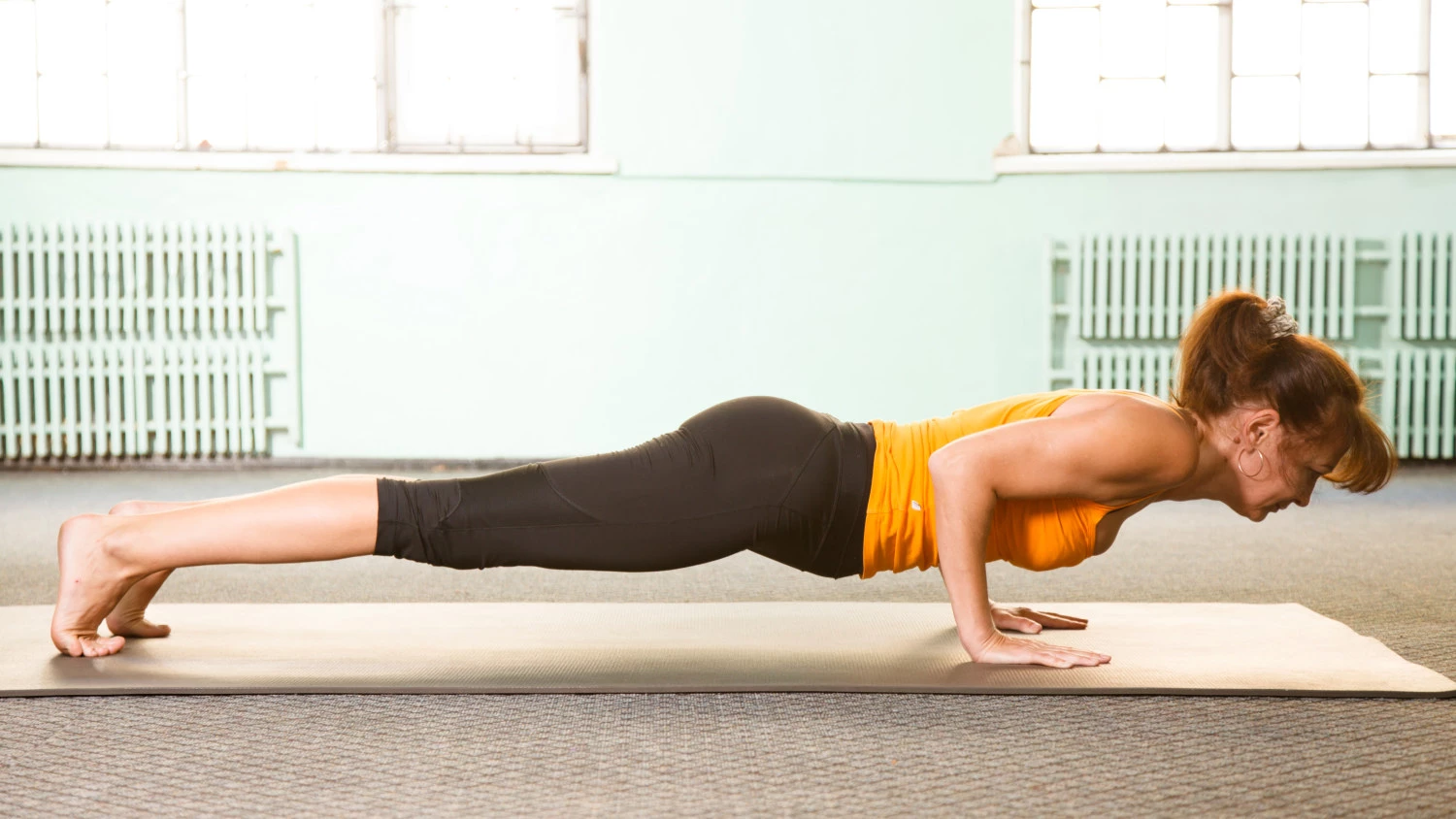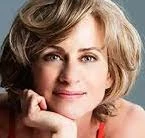Natasha Rizopoulos: Keys to Refining Your Vinyasa – Part 1: Mastering Chaturanga

One of the most important transitions in a Vinyasa-based practice, is moving from Chaturanga to Urdvha Mukha Svanasana (Upward Facing Dog). When I first demonstrate this transition it often elicits an audible “aahhhh,” I think because students can instantly see how huge the impact is on each of the poses it connects.
What makes the transition so transformative is that it requires you to engage your legs, and if you have to use your legs in the transition, you’re more likely to use them before and after. This is very good news, as both Chaturanga and Up Dog are immeasurably improved by active and intelligent legs.
We’ll start with how this work affects Chaturanga. When people struggle with Chaturanga it’s often because they aren’t using their legs, with the result that all of the work falls to the shoulders.
This isn’t ideal for a couple of reasons. Many people’s shoulders aren’t strong enough to handle the entire burden of the pose, and (perhaps more significantly) one of the most beautiful things about asana is that (ideally) the entire body works in concert in each pose (and hence why we feel so alive when we practice) so it’s an opportunity loss when one body part doesn’t come to the party.
To really access the strength of your legs you need to practice Chaturanga (and Plank if you are stepping to Plank instead of jumping to Chaturanga) with your feet close enough to your hands that you can keep the ball of the foot pressing into the floor through out the pose, rather than coming forward onto the tips of the toes.
When you keep the ball of the foot embedded in the floor you can then push back into your heels, and this action helps to engage the quadriceps and brings the lower body to life. As you press into your heels, simultaneously reach your sternum forward, creating a taut line of energy along the length of your body. Sometimes this extension causes the hips to sag towards the floor, so counteract that tendency by lifting the tops of your thighs to the ceiling as you drop your tailbone towards the floor. Observe how this pair of actions tones your belly and makes you compact at your center.
Notice how using your lower body takes some of the onus off your upper body and thus gives you the ability to be more precise with your shoulders, rather than just succumbing to gravity and sinking towards the floor.
Instead, catch your shoulders at elbow height and pin your elbows against your sides. This arm position will protect your rotator cuff muscles and allow you to maintain length in your pectorals so your chest doesn’t collapse and your heart stays open.
This openness in the front body is central to a smooth transition into Urdvha Mukha. The chest and shoulders in an aligned Chaturanga are almost identical to those of Up Dog, so establishing these qualities in your Chaturanga will have a huge impact on the subsequent backbend.
Now it’s time for the transition. With your shoulders still at elbow height (so the chest stays open and prepared for Up Dog) and keeping your body long and straight like a plank of wood, use the strength of your legs to push back through your toes so that they travel back in space on your mat a couple of inches.
Push all the way through your foot so that you shift from having the toes tucked under and the ball of the foot pressing into the floor, to having the foot pointed and the toes extended back.
It’s crucial that you don’t just roll forward onto your arches without having pushed the toes back first. When you skip the “push back” you end up in Upward Facing with your shoulders too far forward, which both compromises your wrists (the angle is too acute) and deprives you of the opportunity to use your arms to deepen the curve of your thoracic spine.
In Urdvha Mukha Svanasana the shoulders must stack directly over the wrists. This position protects your wrists and also establishes a vertical line with your arms, which enables you to pull your chest through the gateway of your arms to create a coiling action in your upper back. Absent the ability to move this mid portion of your spine, you end up compensating by moving the neck and lower back too much, often creating a vulnerability in these hyper-mobile areas.
Too much information? I promise it will make sense when you actually try it. For now, hang in and read on.
To sum up thus far: You need to activate your legs in Chaturanga so that your shoulders don’t have to do all the heavy lifting and therefore can act with more precision (we all lose the ability to be skillful when we are overwhelmed).
Using your legs also prepares the upper body for Urdvha Mukha and the lower body for the transition — It requires leg strength to make your toes slide on a sticky mat that is designed to prevent this very thing!
Once you’ve slid your feet back, ANCHOR them in place by pressing down through the tops of your feet. Then pull your chest forward and up coming into Up Dog. Make sure your shoulders are directly above your wrists — Even an inch too far forward or back will prevent you from finding the full expression of the pose.
Some hints for determining if your shoulders are in the right place: If you can’t find the action of drawing your chest through your arms to open your upper back, your shoulders are probably too far forward. Same diagnosis if your wrist are achy. If you can’t lift your legs away from the mat and feel like you are sitting in your lower back, your shoulders are probably too far back.
Finally: An inch is a mile in Yoga. And a picture is often worth a thousand words. If you are not absolutely sure about the alignment of your shoulders in both Chaturanga and Urdvha Mukha, get someone to take a picture. You may be surprised by what you discover …
Or, to use the language of the Sutras, notice if Avidya, (misperception or non-seeing) is at play. Patanjali explains that it is the root of all suffering. We often think our bodies are doing one thing when in fact something quite different is actually happening.
If this all seems awfully technical, consider the following. I believe that what happens in asana is inevitably a metaphor for what happens in life. Think of all the life lessons available to you as you practice and refine the classical Vinyasa; each repetition an opportunity to pay better attention, each repetition a vehicle for greater self-knowledge.
Next: The transition from Urdvha Mukha Svanasana (Upward Facing Dog) to Adho Mukha Svanasana (Downward Facing Dog)…
Reprinted with permission from natasharizopoulos.com
 As a former ballet dancer, Natasha Rizopoulos knew she had come home when she discovered yoga in her 20s. Now a Senior Teacher with YogaWorks and Down Under Yoga, and a writer, teacher, and DVD instructor for Yoga Journal, Natasha is known world-wide for her ability to communicate the essence of sophisticated postures and ideas in ways that have a transformative effect upon one’s understanding of yoga. Her yoga training includes extensive studies in both the Ashtanga yoga and the Iyengar yoga systems; these two traditions continue to inform her teaching, creating a dynamic and rigorous blend of intelligently sequenced and aligned Vinyasa Flow.
As a former ballet dancer, Natasha Rizopoulos knew she had come home when she discovered yoga in her 20s. Now a Senior Teacher with YogaWorks and Down Under Yoga, and a writer, teacher, and DVD instructor for Yoga Journal, Natasha is known world-wide for her ability to communicate the essence of sophisticated postures and ideas in ways that have a transformative effect upon one’s understanding of yoga. Her yoga training includes extensive studies in both the Ashtanga yoga and the Iyengar yoga systems; these two traditions continue to inform her teaching, creating a dynamic and rigorous blend of intelligently sequenced and aligned Vinyasa Flow.


